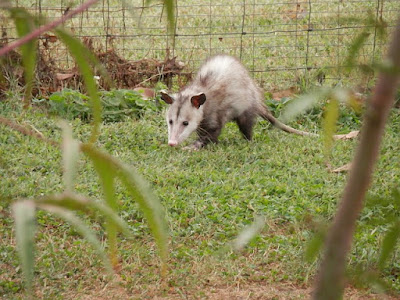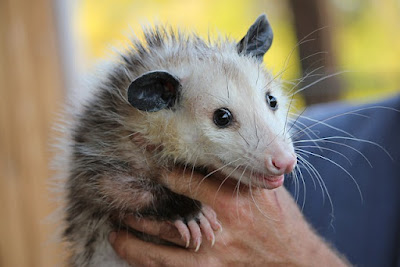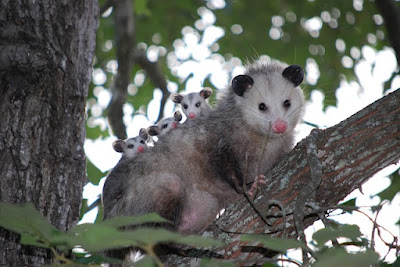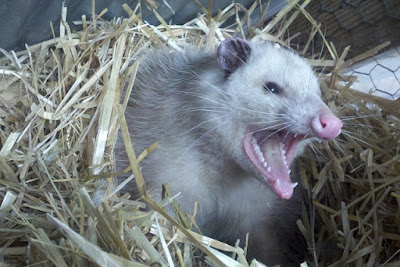The opossum, often misunderstood and overlooked, is a remarkable creature that deserves our attention and admiration. These marsupials, native to the Americas, have a rich history and unique characteristics that make them fascinating subjects for study and admiration. In this article, we'll explore the world of opossums, highlighting their biology, behavior, and the important role they play in our ecosystem.
Brief summary
Opossums belong to the marsupial order Didelphimorphia, and they are the only marsupials found in North America. There are over 100 species of opossum, but the Virginia opossum (Didelphis virginiana) is the most well-known and widely distributed in the United States and Canada. They are adaptable creatures, able to thrive in a wide variety of habitats, from forests and swamps to urban areas.
Physical characteristics
Opossums are easily recognized due to their distinctive appearance. They have a prehensile tail that aids in balancing and climbing, a pointed snout, and hairless ears. Opossums are roughly the size of domestic cats, with a body length of 10 to 15 inches, not including their tail. The color of their fur can vary, from brown to black, and their face is often white and the nose is pink.
Unique reproductive system
One of the most interesting aspects of opossum biology is their reproductive system. Opossums are marsupials, which means they give birth to underdeveloped young and carry them in a pouch on their abdomen. A female opossum can give birth to 20 or more offspring in a single litter, but only a few of them survive. The mother's pouch provides a safe environment for young opossums to develop until they are old enough to venture out on their own.
Survival strategies
Opossums are opportunistic omnivores, meaning they eat a wide variety of foods. Their diet includes fruits, vegetables, insects, small rodents, and meat. Their ability to consume a variety of foods makes them flexible and adaptable to different environments. Additionally, opossums have a remarkable immune system that allows them to resist many diseases, including rabies.
Playing Dead: The Opossum's Unique Defense Mechanism
One of the most well-known behaviors associated with opossums is "playing dead" or "playing possum". When faced with a threat, the opossum may go limp, fall to the ground, and secrete a foul-smelling fluid from its anal glands. This behavior often scares off hunters who think the opossum is sick or dead. This extraordinary adaptation has earned opossums a reputation for being cowards, but in reality, they are simply using a clever survival strategy.
Ecosystem services
Opossums play an important role in their ecosystem. As scavengers, they help clean up decaying matter, which can help limit the spread of disease. Additionally, they consume large numbers of insects, including ticks, which may reduce the transmission of diseases such as Lyme disease.
The opossum, with its unique characteristics and vital role in the ecosystem, is a true unsung hero of the animal kingdom. Despite their sometimes misunderstood behavior and appearance, opossums contribute to the balance of nature in ways that are often overlooked. As we strive to protect and preserve our natural world, it is important to recognize and appreciate the valuable contributions of these remarkable marsupials. The next time you encounter an opossum, stop for a moment to appreciate the complexity of nature's design and the important role this creature plays in our environment.
Here are some interesting facts about opossums:
- Marsupial Marvels: Opossums are marsupials, which means they carry their babies in a pouch. The pouch is located on the female's abdomen, and the young, known as joeys, remain there as they develop after birth.
- Species Diversity: There are over 100 different species of opossum, but the Virginia opossum (Didelphis virginiana) is the most well-known and widely distributed in North America.
- Adaptive Eaters: Opossums are opportunistic omnivores, meaning they eat a wide variety of foods, including fruits, vegetables, insects, small rodents, carrion (dead animals), and even garbage.
- Nocturnal Lifestyle: Opossums are primarily nocturnal creatures, meaning they are most active at night. They have excellent night vision and a keen sense of smell, which helps them find food in the dark.
- Prehensile Tails: Opossums have prehensile tails, which means they can use them to grab and hold on to objects like tree branches. This tail adaptation helps them climb and balance.
- Playing Dead: When threatened, opossums have a unique defense mechanism called "playing dead" or "playing possum". They may fall to the ground, go limp, and secrete foul-smelling fluids from their anal glands to deter predators.
- High Fertility: Opossums have a high fertility rate. A female opossum can give birth to a large number of offspring, sometimes as many as 20 in a single litter. However, due to various environmental factors, only a few of these young opossums usually survive to adulthood.
- Immune Superhero: Opossums have a remarkable immune system that allows them to resist many diseases, including rabies. They are not completely immune to the virus, but they are highly resistant to it.
- Disease Control: Opossums help control populations of ticks and other disease-carrying insects by eating them. It may contribute to reducing diseases such as Lyme disease.
- Wide Range of Habitats: Opossums are adaptable creatures and can thrive in a variety of environments including forests, swamps, urban areas, and farmland. They are highly adaptable to changing habitats.
- Short Lifespan: In the wild, opossums have a relatively short lifespan, typically only living 1 to 2 years due to the various predators and threats they face.
- Notable Teeth: Opossums have 50 teeth, more than any other North American mammal. Their dental formula includes sharp fangs and molars that help them eat a wide variety of foods.
- Vocal creatures: Opossums are not completely silent. They can produce a variety of sounds, including whispers, growls, and clicks, to communicate with each other.




Comments
Post a Comment